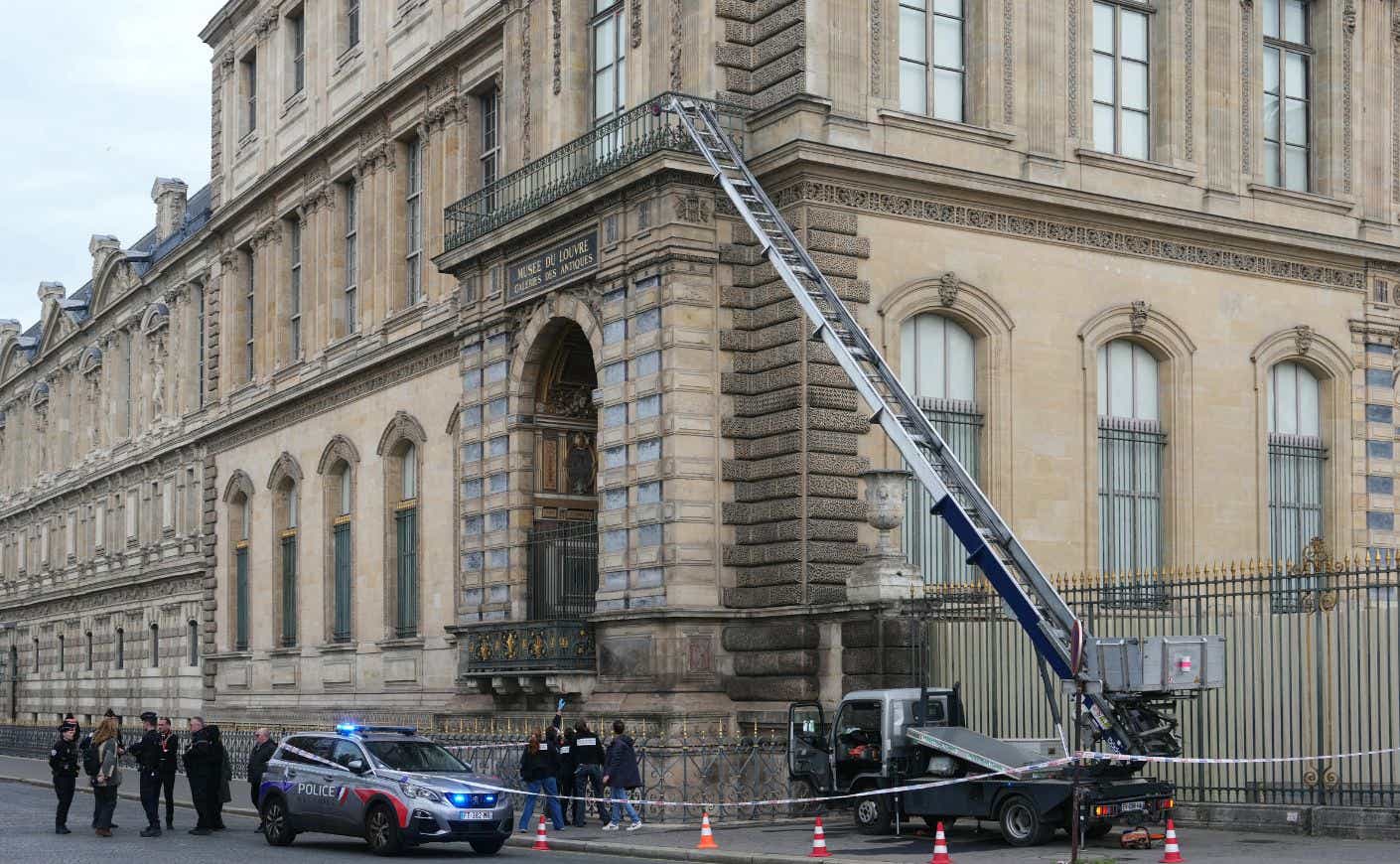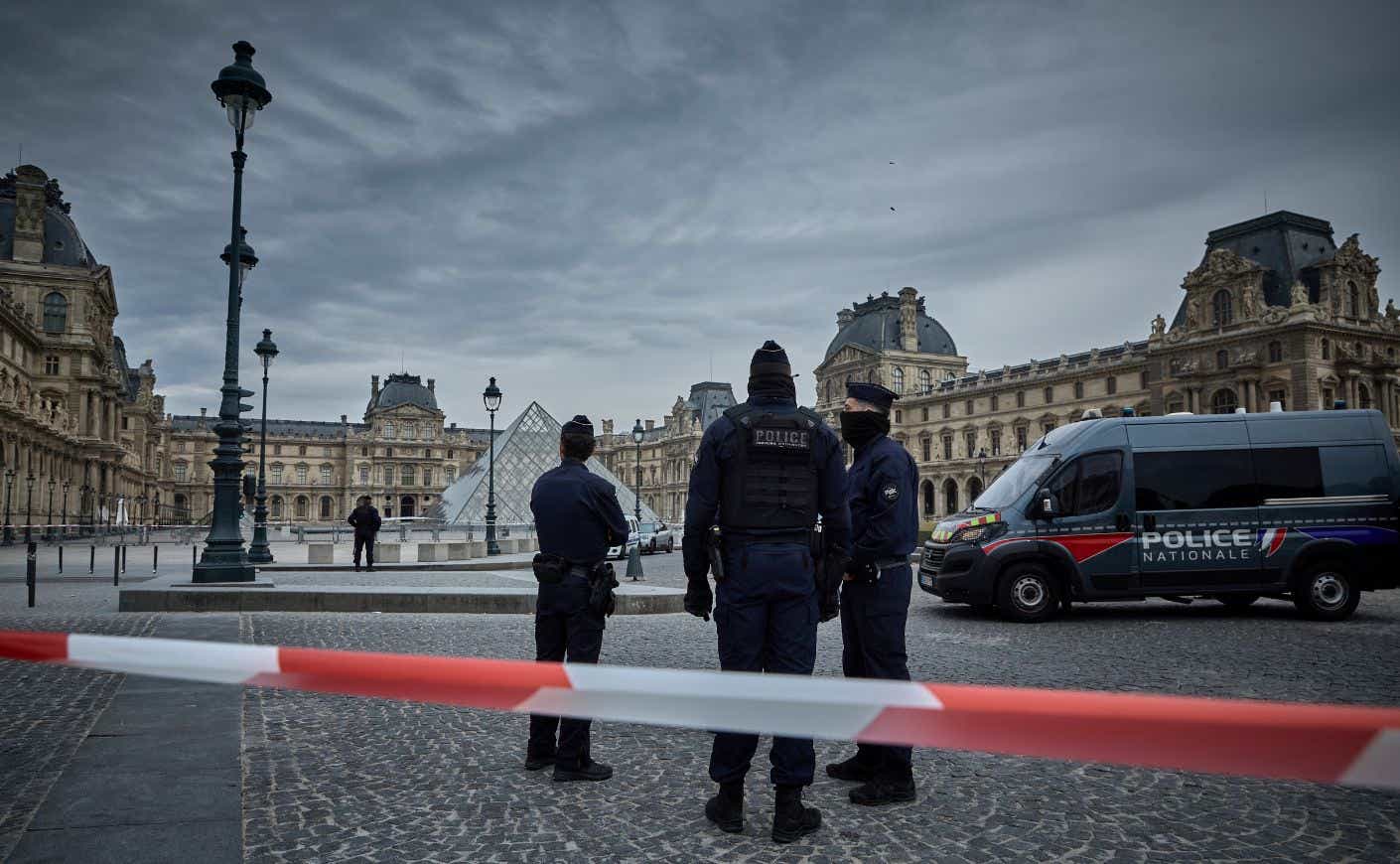It wasn’t quite Ocean’s Eleven — but it was close. In a heist that seems straight out of a movie, four masked thieves pulled off a bold, seven-minute robbery at Paris’s Louvre Museum, slipping away with a trove of priceless jewels in broad daylight.
As the gang remains on the run, investigators are still piecing together how such a meticulously planned operation could unfold at one of the most famous — and heavily visited — museums in the world. The lightning-fast robbery has rattled France, sparking outrage, embarrassment, and a sprawling manhunt. It’s also raised tough questions about how a group of thieves could outsmart security at one of the country’s most iconic landmarks.
So, how did they pull it off? We took a closer look.
How did the Louvre heist unfold?
The museum had only been open for half an hour when four masked suspects arrived at 9:30 a.m., ready to make their move. Together, they used a vehicle-mounted extendable ladder to hoist themselves up to a second-floor balcony window.

Two of them slipped inside through the window, armed with an angle grinder and other power tools. They headed straight for the Galerie d’Apollon — the glittering gallery that houses the French crown jewels — and smashed through the glass of two display cases holding the priceless treasures.
The robbers didn’t carry guns or injure anyone, but they threatened security guards with their angle grinders before making their getaway. Even as alarms blared and people rushed out, the gang climbed back down the crane, jumped on scooters, and vanished into the streets before police could respond.
Sources and officials told Agence France-Presse the entire job took just seven minutes. In the rush to escape, one suspect left a yellow vest behind near the scene, and officials say the thieves also tried to set fire to the basket lift they used, but museum staff intervened before it could be destroyed.
The Louvre remains closed for now, as the manhunt for the four thieves continues. In a statement on its website, the museum said anyone who had already purchased tickets would automatically receive a refund.
What jewels were stolen?
Authorities report that thieves made off with eight dazzling pieces of jewelry.
Among the loot was a necklace and matching earrings Napoleon I once gave to his second wife, Empress Marie-Louise. They also took a sparkling diadem, brooch, and decorative bow that belonged to Empress Eugénie, the wife of Napoleon III. The diadem alone is set with nearly 2,000 diamonds.
And finally, they grabbed a tiara, necklace, and single earring from a sapphire set worn by Marie-Amélie, the last queen of France. That necklace features eight sapphires and more than 600 diamonds.
The gang tried to take a ninth piece — Empress Eugénie’s crown — but dropped it during their getaway, leaving it slightly damaged on the ground. “It’s worth several tens of millions of euros — just this crown. And it’s not, in my opinion, the most important item,” Drouot auction house President Alexandre Giquello told Reuters.
In a curious twist, they also left behind the Regent Diamond, one of the museum’s most famous treasures, which is estimated by Sotheby’s to be worth more than $60 million. Why the thieves ignored such a prize remains unclear. “I don’t have an explanation,” Paris Prosecutor Laure Beccuau said, per Reuters. “It’ll only be when they’re in custody and face investigators that we’ll know what type of order they had and why they didn’t target that window.”
Who are the suspects?
For now, the masterminds remain a mystery. But one thing seems clear: This wasn’t a sloppy smash-and-grab. Interior Minister Laurent Nunez called it “a major, highly organized operation” carried out by a team that had done its homework.
The investigation has been handed over to a specialized French police unit. Around 60 investigators are on the case, keeping every possibility on the table.
Authorities believe the heist was either commissioned by a private collector or pulled off by thieves planning to melt down or resell the jewels and precious metals. “Nowadays, anything can be linked to drug trafficking, given the significant sums of money involved,” Nunez explained.
So far, officials say they don’t see any sign of foreign actors being involved.
What are people saying about the robbery?
The costly break-in has sparked an uproar in France. On X, President Emmanuel Macron called it “an attack on our history” and vowed the thieves would be “brought to justice.”
Behind the scenes, officials are now confronting hard questions about how it happened. Justice Minister Gérald Darmanin admitted on Monday that there were clear security lapses at the Louvre, which has faced staffing shortages in recent months.
“What is certain is that we have failed, since people were able to park a furniture hoist in the middle of Paris, get people up it in several minutes to grab priceless jewels, giving France a terrible image,” he reportedly told France Inter radio.
But this isn’t the first time the Louvre has been at the center of a high-profile theft. Back in 1911, a former museum employee famously slipped the Mona Lisa under his coat and walked right out of the building. The painting was missing for two years before it was finally recovered.
In 1976, three burglars scaled the scaffolding along the side of the museum, smashed a window, and grabbed the diamond-studded sword used in the coronation of King Charles X. That case was never solved — and the sword has never been found.
And in 1983, two pieces of 16th-century Italian armor vanished in another mysterious theft. They weren’t seen again until nearly four decades later, when the armor resurfaced at an auction in Bordeaux.









